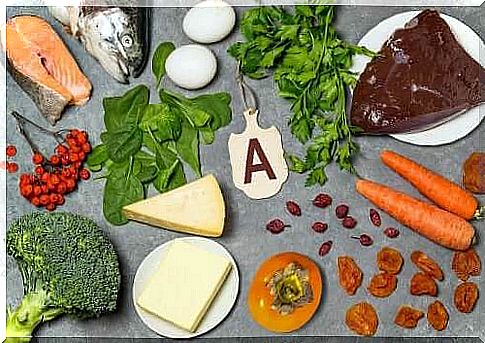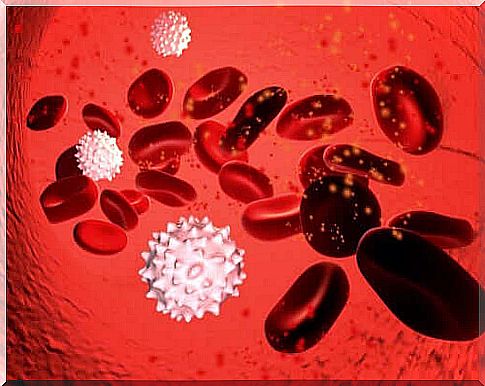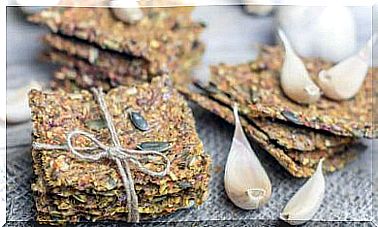What Is Vitamin A?
Vitamin A can be found in some foods such as fish, milk and in orange and yellow vegetables. It strengthens eyesight and the immune system and contributes to healthy skin. Find out more about its positive properties and where to find it here.

Vitamin A is one of the fat-soluble vitamins that are a natural component of a number of foods. In animal products, it comes in the form of retinol and plant as provitamin A before. Like all vitamins, the body needs it in small amounts to stay healthy, which is why it should not be missing in the daily food intake. What does it do?
Positive properties and effects of vitamin A.
We need vitamin A for certain body functions. It shows its effect in very different areas, which we explain below.
immune system
Vitamin A is primarily known as an anti-inflammatory vitamin because it is of fundamental importance for an intact immune system. Above all, it prevents infections of the respiratory tract, such as sore throat and throat infections, sinus infections, bronchitis, etc.

Reproduction and development
Vitamin A plays an important role in embryonic development. This is the longest known effect of the vitamin. Deficiency during pregnancy can result in deficits in the formation of the urinary tract, the diaphragm or the kidneys of the fetus.
In addition, it has been scientifically proven that both men and women need this vitamin for reproduction.
Preservation of sight
Vitamin A is considered the vitamin for eyesight. If it is absorbed in sufficient form, the light can be converted into electrical impulses that can be picked up by the brain.
It also improves vision and prevents night blindness (difficulty seeing in poor lighting conditions).
Due to its antioxidant effect, it also helps prevent some eye diseases : presbyopia, macular degeneration, cataracts, glaucoma, farsightedness, nearsightedness or retinal detachment.
Antioxidants
Since vitamin A is one of the antioxidants, it can have a preventive effect against degenerative diseases such as Alzheimer’s or chronic cardiovascular and lung diseases. Protection against other non-communicable diseases such as cancer is also one of the possible effects.
Skin and mucous membranes
The vitamin contributes to the health of the skin and mucous membranes and therefore plays a special role in protecting the tissues in the digestive tract and in the respiratory system. It is also needed for tissue regeneration and thus helps to heal injuries in the digestive system such as stomach ulcers or colon inflammation.
The cosmetics industry has now discovered this vitamin and uses it in a large number of products, as it is effective against acne and warts and prevents skin aging.

What is Vitamin A in?
As already mentioned, we need this vitamin for essential body functions. Since humans are not able to synthesize it themselves, they have to take it in with food. Here it comes in 2 different forms : preformed vitamin A and provitamin A.
Preformed Vitamin A.
This occurs in food of animal origin. The body can absorb and store it and convert it to retinol very easily. Of the foods that contain it, the following should be mentioned in particular:
- Beef liver
- Cod liver oil obtained from cod
- Eggs (yolk)
- Butter and whole milk
- Some types of fish such as sardine, herring, mackerel, tuna or salmon
Provitamin A or vitamin A precursor
Some carotenoids found in plants act like precursors to this vitamin, such as beta-carotene, which is converted to retinol to act as an enzyme in the gut.
Carotenoids are found mainly in orange and yellow vegetables, as well as in some dark green varieties, where the yellow and orange pigments of the carotenoids are hidden under the dark green color of the chlorophyll. The main sources of carotene are:
- Red peppers, tomatoes, pumpkin and carrots
- Honeydew melon, cantaloupe and mango
- Peaches and nectarines in smaller quantities
- Spinach, broccoli, Swiss chard, savoy cabbage
In order to better absorb the vitamin, the vegetables must be boiled and prepared with a little olive oil.

Vitamin deficiency and its effects
A deficiency in vitamin A occurs when one eats one-sidedly over a long period of time. In the developed countries this occurs rather rarely, in some countries in Africa and in Southeast Asia, where foods containing vitamin A are scarce, it is more likely.
If, for health-related reasons, the absorption of fat in the intestine is not sufficiently guaranteed, a deficiency can arise even with a balanced diet. This is the case with chronic diarrhea, celiac disease, problems with the pancreas or blockage of the biliary tract.
Signs of vitamin A deficiency can include:
- Very dry skin with rashes, flaking or warts appearing
- Brittle nails
- Impairment of vision, night blindness, very dry eyes due to insufficient function of the lacrimal glands
- Loss of appetite and impaired sense of taste
- Frequent inflammation
The vitamin deficiency is diagnosed through a symptom assessment and blood analysis. At the beginning it is necessary to take nutritional supplements. Above all, it is important to follow the instructions and advice of your doctor or specialist, which are adapted to the individual case.
Beware of overdose
Too much vitamin A can be toxic. In this case, the so-called hypervitaminosis A occurs. On average, it is believed that consuming ten times the recommended daily dose can be dangerous.
In general, however, it is difficult to obtain health-endangering amounts through diet. Symptoms of poisoning are more likely to occur when overdosing on vitamin preparations. It is therefore advisable to always adhere to the package insert or the prescription of the doctor or pharmacist.
Excessive consumption of vegetables containing vitamin A is usually harmless. The body absorbs what it needs and excretes everything that is excess. However, an increased intake of beta-carotene can lead to an orange-yellowish skin tone.
In autumn it is not difficult to fill your plate with green, orange and yellow vegetables. If you add milk, fish and eggs, you have everything your body needs for a balanced vitamin A balance.









